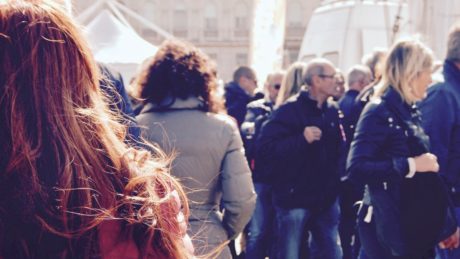Many people believe that agoraphobia is a fear of crowded places. That’s one type of agoraphobia. However, there are other types as well. Becoming aware of the symptoms and treatments is the first step towards overcoming agoraphobia.
Types of Agoraphobia
Put simply, agoraphobia is the fear of being in certain places and/or situations that you worry you won’t be able to escape or get help in.
Sometimes, that does mean a fear of crowded spaces. People with agoraphobia are sometimes afraid of concerts or public transportation.
However, people with agoraphobia can also fear:
Enclosed spaces, such as elevators, where they might get stuck
Wide, open spaces such as empty fields where they feel alone and like help can’t reach them
Waiting in lines
Being in potentially embarrassing situations
Going places alone
In relation to the above, people with agoraphobia may fear:
Bodies of water and/or being on a boat
Bridges
Large stores with too many aisles; malls
Movie theaters and other closed performance spaces
Parking lots
Small stores with only one exit route
Agoraphobia, Panic Attacks, and Avoidance
Panic attacks are one of the primary symptoms of agoraphobia. You start to worry that you’re not going to be able to escape the situation. Then you panic.
If you have already had a panic attack, then you may be more likely to associate that place with your fear. Therefore, you’re increasingly likely to try to avoid that trigger.
For example, you are driving your car to school when you run into a traffic jam. You’re stuck, and there is no way off of the road. All that you can do is wait until the traffic starts to move again, but you have no idea when that will be. You have a panic attack.
Then, the next time that you’re about to drive your car to school, your mind and body remember that panic attack. You want to avoid that again. You may drive a different route, get there by bicycle, or skip school that day. As time goes on, your avoidance only gets stronger, so that you’re no longer driving or going to school at all.
Other Symptoms of Agoraphobia
Panic attacks, feelings of fear, and avoidance of triggers are the most common symptoms of agoraphobia. Here are some others to look for:
You feel better when a friend accompanies you. However, over time, even that doesn’t help so much.
Other people in your life regularly indicate to you that although they sympathize your fear of the situation is highly out of proportion to actual danger.
You truly think that you might die in the situation despite all evidence to the contrary.
Your anxiety and/or avoidance of triggers causes negative impact to your school, work, and/or social life.
When in one of your trigger situations, such as on an elevator, you feel physical symptoms of panic including racing heart, difficult breathing, and tightness in your chest.
Agoraphobia Treatment
It’s normal for people to want to avoid their triggers so they don’t panic. However, the more you engage in avoidance with anxiety, the worse the anxiety gets. That’s true for agoraphobia. The only way to get better is to learn to cope with your fears. There are several treatment methods that help with this including medication, talk therapy, and Exposure and Response Prevention, which is a type of Cognitive Behavioral Therapy.
